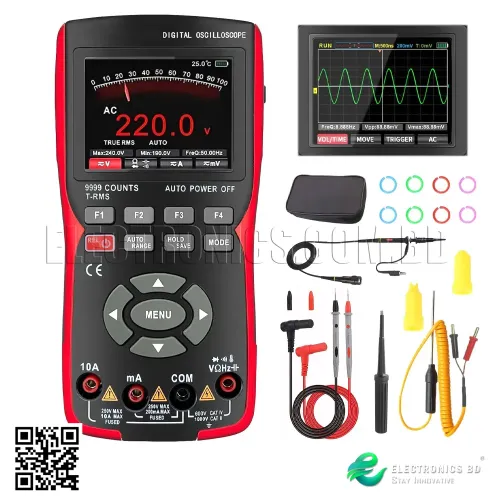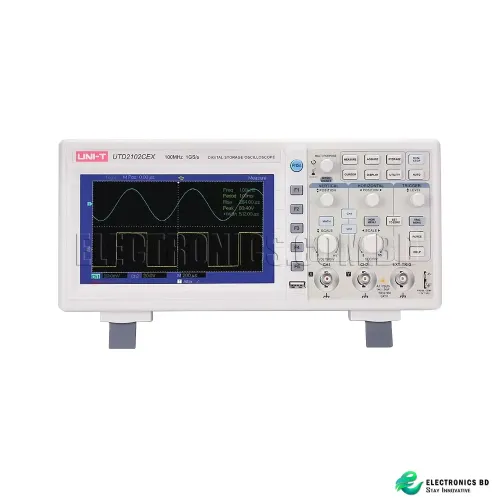Neodymium Magnet Coin Shape 25 x 2 mm
- 3D printers & CNC
- Accessories
- Active Components
- All Departments
- CNC Accessories
- Electrical Accessories & IOT
- Latest
- Oscilloscope
- Passive Components
- Projects
- SMD Components
- Socket, Port & Jacks
- Sound Systems
- Drones & RC Hobby
- Sale
Your shopping cart is empty!
Specifications:
- Type: Neodymium Magnet
- Plating: Nickel + Copper + Nickel Triple Layer Plated
- Diameter: 25mm
- Thickness: 2mm
- Tolerance: ± 0.5mm
- Max Operating Temperature: 80 Celsius degree
- Magnetic pole direction: Axially magnetized / Poles on Flat Ends
Package:
1x Neodymium Magnet Coin Shape 25 x 2 mm
Product Description
The Neodymium Magnet Coin Shape 25mm x 2mm, a powerful and versatile magnet designed for a wide range of applications. Crafted with precision and durability, this magnet offers exceptional magnetic performance.

With its nickel, copper, and nickel triple-layer plating, this magnet provides excellent corrosion resistance and long-term durability. The 25mm diameter and 2mm thickness make it suitable for various uses, from DIY projects to industrial applications.
Whether you need a strong magnet for magnetic closures, holding tools, or sensor applications, the Neodymium Magnet Coin Shape 25mm x 2mm delivers reliable performance. Its axially magnetized poles ensure strong and stable magnetic attraction, making it a valuable addition to your toolkit.
How the Neodymium Magnets are made ?
Raw Material Preparation: The process begins with the preparation of raw materials, including neodymium, iron, and boron (NdFeB). These materials are refined and processed to achieve the desired purity and composition.
Alloy Melting and Casting: The refined raw materials are melted together in a vacuum induction furnace at temperatures exceeding 1300°C. This process forms a molten alloy of neodymium, iron, boron, and other elements to enhance magnetic properties.
Crushing and Milling: The molten alloy is solidified into ingots, which are then crushed into fine powder particles using specialized milling equipment. This powder serves as the base material for forming magnets.
Pressing: The powder is compacted into the desired shape using hydraulic or mechanical presses. The shape may vary depending on the final application, such as discs, blocks, or cylinders for round magnets.
Sintering: The pressed magnets undergo a sintering process in a controlled atmosphere furnace at temperatures ranging from 1000°C to 1300°C. During sintering, the powder particles bond together, resulting in a solid magnet with improved mechanical strength.
Machining and Grinding: After sintering, the magnets are machined and ground to achieve the final dimensions and surface finish. This step ensures that the magnets meet the specified tolerances and surface requirements.
Plating: The magnets are coated with a protective layer of nickel-copper-nickel (Ni-Cu-Ni) through an electroplating process. This triple-layer plating enhances corrosion resistance and durability, extending the magnet's lifespan.
Magnetization: The magnets are magnetized using strong magnetic fields to align the magnetic domains within the material. This process gives the magnet its permanent magnetic properties.
Quality Control: Throughout the manufacturing process, rigorous quality control measures are implemented to ensure that the magnets meet the specified performance and dimensional requirements. This includes testing for magnetic properties, dimensional accuracy, and surface quality.
Packaging and Distribution: Once the magnets pass quality control inspections, they are packaged and prepared for distribution to customers worldwide.

Frequently asked questions (FAQ):
What are neodymium magnets, and why are they popular?
Answer: Neodymium magnets are a type of rare-earth magnet known for their exceptional strength and magnetic properties. They are widely used in various applications due to their high magnetic strength-to-size ratio, making them popular for applications requiring strong and compact magnets.
What are the common applications of neodymium magnets?
Answer: Neodymium magnets have diverse applications, including magnetic closures for doors and cabinets, holding tools and objects in place, magnetic clasps for jewelry, magnetic sensors, and industrial applications such as motors and generators.
Are neodymium magnets safe to handle?
Answer: While neodymium magnets are not inherently dangerous, they can pose risks if mishandled. These magnets are very strong and can cause injuries if they pinch or crush fingers. Additionally, swallowing or inhaling small neodymium magnets can be hazardous, especially in children. It's crucial to handle neodymium magnets with caution and keep them out of reach of small children.
How should neodymium magnets be stored to maintain their magnetic properties?
Answer: Neodymium magnets should be stored away from other magnets and ferromagnetic materials to prevent unintentional attraction or damage. Additionally, they should be kept in a dry environment to avoid corrosion. Storing them in a cool, stable temperature helps maintain their magnetic properties over time.
Can neodymium magnets be customized for specific applications?
Answer: Yes, neodymium magnets can be customized in terms of size, shape, and magnetic strength to meet specific application requirements. Manufacturers can produce magnets with different dimensions, coatings, and magnetization directions based on customer specifications. Customized neodymium magnets are commonly used in industrial, automotive, and aerospace applications where standard magnets may not suffice.
Similar Products:
1pcs 15x3mmNeodymium Magnet Small Round Rare Earth Magnet
Neodymium disc Magnet 12 X 2 mm
Neodymium Disc Magnet 30 x 5mm










